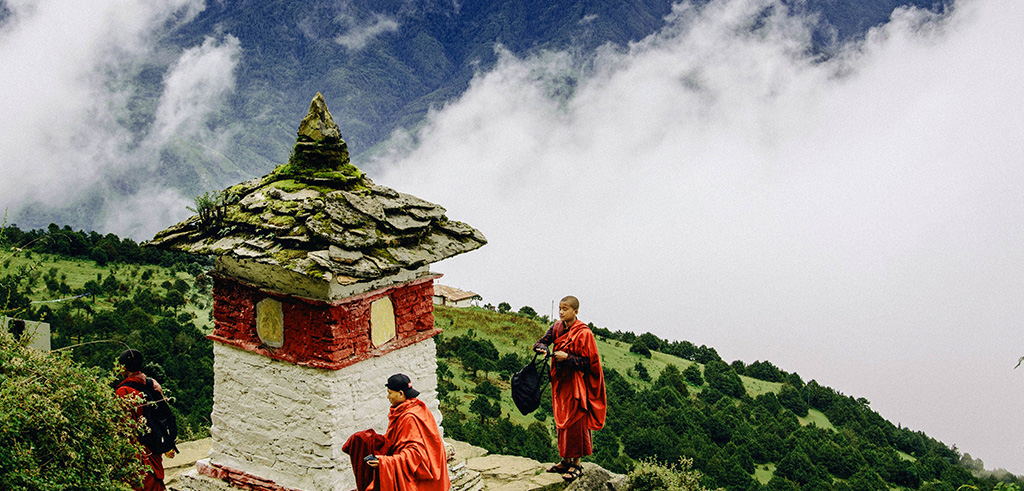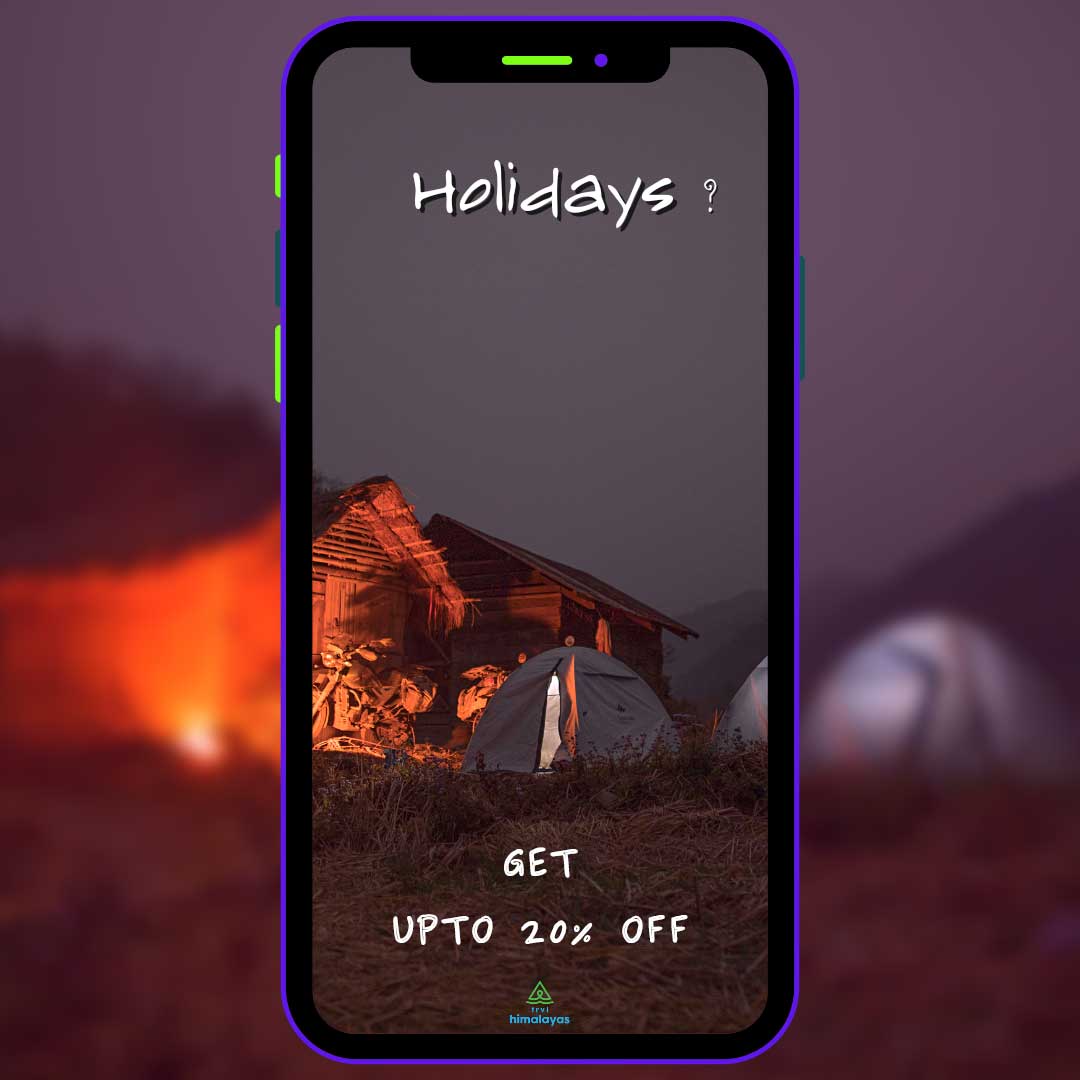






[ARRIVAL] Arrive at Paro International Airport and Drive to Thimphu Arrive at Paro International
Airport. you will be welcomed by a representative and briefed by the tour guide then immediately
transferred to Thimphu. Thimphu is the centre of government, religion and commerce. The capital
has an interesting combination of tradition and modernity and includes some of the most advanced
and remotest parts of the kingdom. It is home to the Kings and the Royal family members, civil
servants, expatriates, politicians, business persons and monks. Enjoy this cultural mix based on
livelihood. Of culture, we will take you through temples, dzongs, chortens, museums, handicraft
stores, nunneries, parks and many more. Allow yourself to meet both traditional and contemporary
artists.
Buddha Point/ Kuensel Phodrang – Is the largest Buddha statue in the country, from there you can
get a good view of the Thimphu valley.
Memorial Chorten – Built in the year 1974 in the memory of our third king of Bhutan, His Majesty
Jigme Dorji Wangchuck.
[Thimphu Halt (Local Sightseeing) Wangditse Day Hike]
The walk from the Radio Tower,
Wangditse is a moderate hike with great views over Thimphu. The peace road finishes at the
broadcast tower, which further up is adorned by fluttering prayer flags. The view of south Thimphu
from here is superb. Wangditse Goemba was founded in 1750 by the attendants of Bhutan's 8th Desi,
Yeshey Rabgye. It was renovated in 2002 after it suffered serious damage in a windstorm in 1995. The
goemba houses the statues of the guardian deities Yeshe Gonpo (Mahakala), Palden Lhamo
(Mahakali) and Tsheringma (the Goddess of Longevity)
Institute of Zorig Chusum - Commonly known as the Painting School, or the School of the Thirteen
Arts, the institute offers you a glimpse of novices learning 13 traditional arts and crafts of Bhutan. It
is a hands-on trip for you. Enjoy a few moments with future artists of the country.
Centenary Farmers' Market - Most of the Thimphu population congregate on the banks of Wangchhu
River where the weekend market is held. Villagers from the Valley and other nearby places come to
sell their wide range of agriculture products in the market. The market is by far the largest domestic
market in Bhutan. A visit to the market provides great photo opportunities, as well as the chance to
mingle with local people and perhaps buy souvenirs.
Tashichho Dzong – The “fortress of the glorious religion” was initially erected in 1641 and rebuilt by
King Jigme Dorji Wangchuck in the 1960s. Tashichho Dzong houses some ministries, His Majesty’s
secretariat, and the central monk body.
Motithang Takin Preserve – Houses the rare national animal of Bhutan. Takin is listed by
international conservation agencies as a vulnerable species and it is a rare animal found only in
Bhutan, Nepal and Burma. Overnight hotel in Thimphu city
[Thimphu to Punakha After breakfast, drive to Punakha]
Approximately 3-hours drive
through picturesque valleys and mountain slopes dotted with typical Bhutanese villages. From the
Dochula 1pass, at over 10,000ft, vast panoramic views of the high snow-capped peaks of the
Bhutanese Himalaya can be enjoyed on a clear day. Continue to drive down into the Punakha valley.
On the way, visit Chhimi Lhakhang – This was founded in 15 Century by Lama Dukpa
Kinley also known as a divine mad man. It is a half-hour walk across a local village and rice field.
After lunch visits Punakha Dzong – built in 1637 by Zhabdrung. Overnight at hotel in Punakha
[Punakha Halt Khamsum Yulley Namgyal Chorten] The Chorten sits majestically on the ridge above Punakha valley with a spectacular view of the countryside and the hills below. The Chorten was built in the year of 1994 by the Queen Mother, Ashi Tshering Yangden Wangchuck to ward off the evil forces and also to bring peace and harmony for all living beings. It is one of the finest examples of Bhutanese architecture. The Khamsum Chorten is located about 30 minutes drive from Punakha town and 45 minutes uphill hike form the base of the hill through the rice fields. On the base of Kamsum Chorten, one will come across the water rafting starting point. Pho Chhu Suspension Bridge - The 160 metres Pho Chhu Suspension Bridge is known for the longest suspension bridge in Bhutan, which gives you spectacular views of Punakha Dzong and the Pho Chhu Valley. Sangchen Dorji Lhendup Choeling Nunnery – Overnight hotel in Punakha valley
[Day trip to Gangtey/Phobjikha Valley Gangtey Goempa]
Situated south of the road and east
of Wangdue Phodrang, is Gangtey Gompa, an old monastery dating back to the 17th century. The
largest Nyingma monastery in western Bhutan, it was founded in 1613 by Gyalse Pema Thinlay.
Phobjikha Valley - Well known as the winter home of the Black-necked Crane (Grus Nigricollis).
Bhutan is home to around six hundred black-necked cranes with Phobjikha being one of the popular
places that the birds migrate to in the winter months from the Tibetan plateau. The elegant and shy
birds can be observed from early November to the end of March. Overlooking the Phobjikha valley is
the Gangtey Goempa. This is an old monastery that dates back to17th century.
Phobjikha Nature Hike - A short trek of about 90 minutes known as Gangte Nature Trail starts from
the Mani stone wall to the north of the Gangteng Gonpa and ends in Khewa Lhakhang.
Black-Necked Crane Information Centre - The valley of Phobjikha is known as the winter home of the
Black-necked Crane (Grus Nigricollis). Bhutan is home to around six hundred black-necked cranes
with Phobjikha being one of the popular places that the birds migrate to in the winter months from
the Tibetan plateau. The elegant and shy birds can be observed from early November to the end of
March. Black-Necked Crane Information Centre, which has informative displays about the cranes and
the valley environment.
[Punakha to Paro Paro Valley]
The beautiful valley is home to many of Bhutan's old
monasteries and temples. The valley is also home to Mount Chomolhari (7,300 meters) situated at
the northern end of the valley whose glacier water forms the Pachu flowing through the valley.
Kyichu Lhakhang – One of the oldest and most sacred temples in the kingdom, dating back to the 7th
century.
Ta Dzong – Former WatchTower which now houses the National Museum.
Rinpung Dzong – This houses the monastic school and the office of the civil administration and
walks down passing close by crossing the Bhutanese typical wooden roofed bridge to Paro town.
Overnight hotel in Paro
[Day trip to Tiger Nest Monastery] After breakfast, drive for half an hour and start the hike. The trail is along an ancient path marked by river-powered prayer wheels. As you reach Taktsang you will be struck by the architectural wonder of this most pious Buddhist shrine in Bhutan. Perched some 1000m, 3000ft on a cliff overlooking the valley; it would justifiably qualify as one of Bhutan’s wonders. The Tiger Nest was caught by fire twice and it has been rebuilt to its original glory. It is said that the legendary Buddhist saint, Guru Padmasambhava, flew from Tibet on the back of a tigress to tame five demons, who were opposing the spread of Buddhism in Bhutan in 746 A.D. Descend back to Ramthangka. If the time permits, drive further north to visit another symbolic structure, which is now under reconstruction. Drugyel Dzong, or “Castle of the Victorious Drukpa,” which was also built by the Shabdrung to commemorate Bhutan’s victory over the Tibetans in the 16th centuries. Hot Stone Bath - You can go for a locally owned Hot Stone Bath, which can take two people at one time. This bath will help loosen your joints, release muscle tension and invoke a profound sense of relaxation. The cost is approximately INR 1600 per person.
[Departure] After breakfast, drive to Paro international airport for your onward flight. Our representative in Bhutan will see off and bid farewell.
